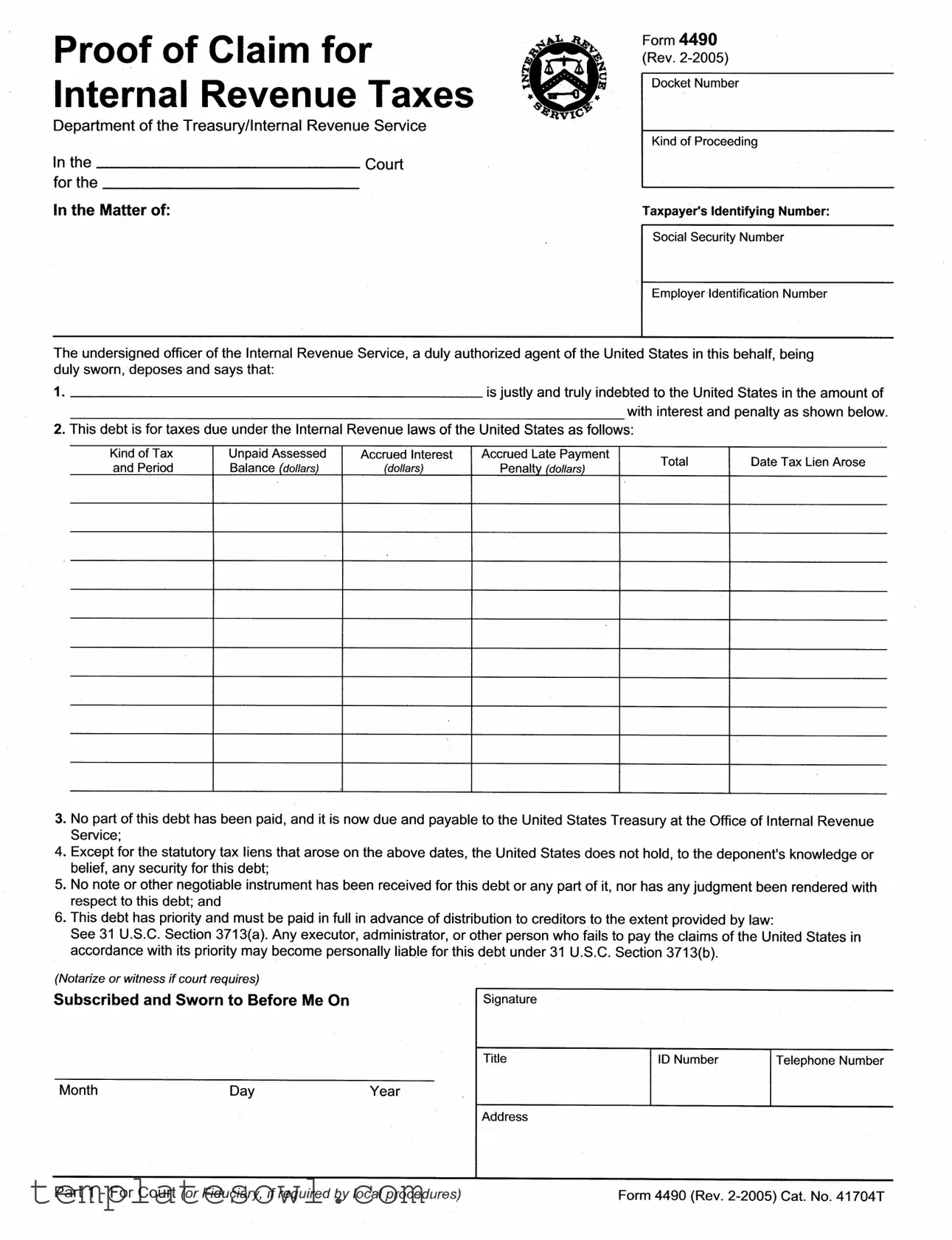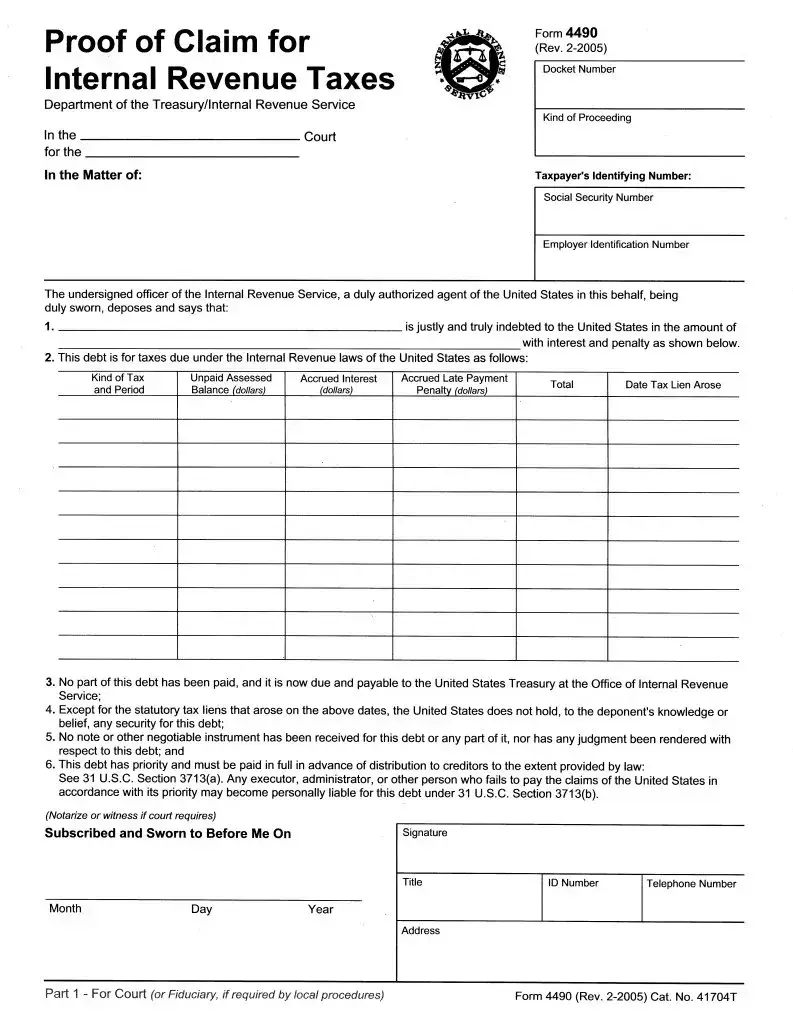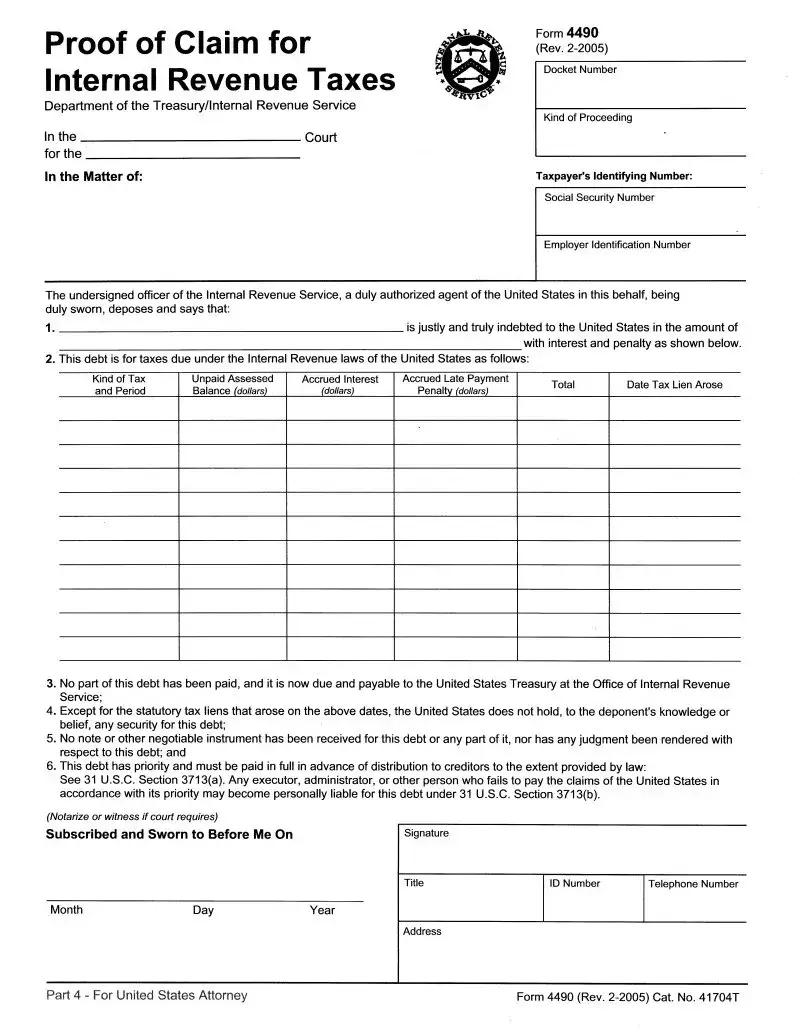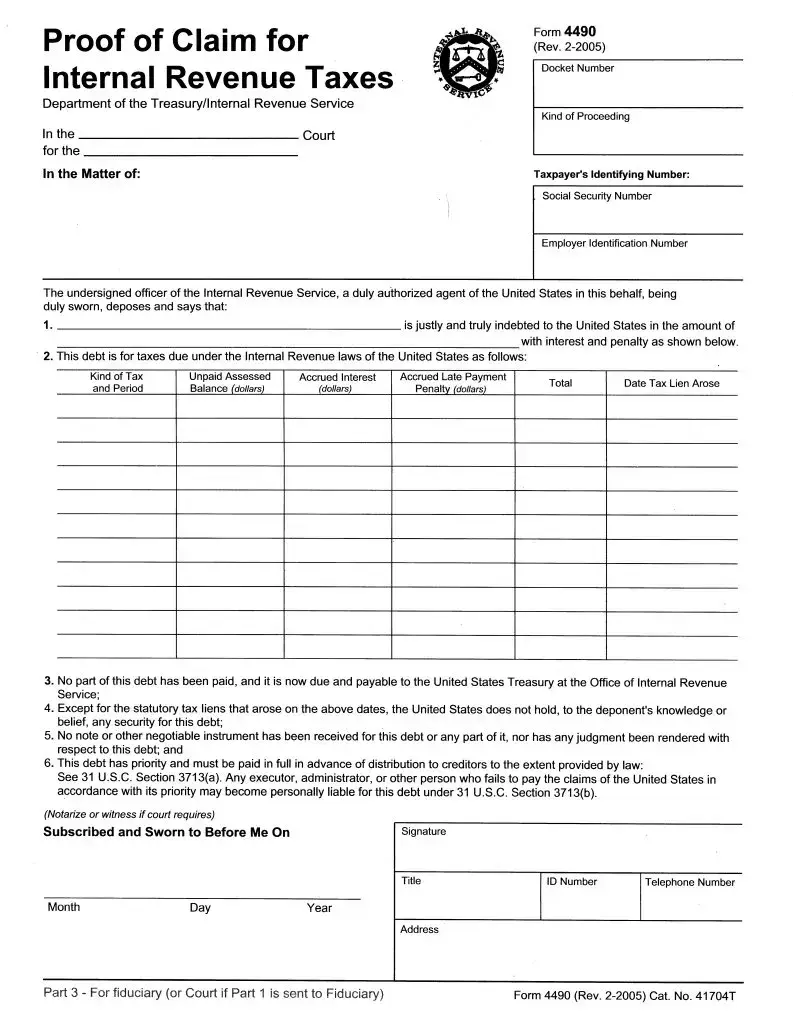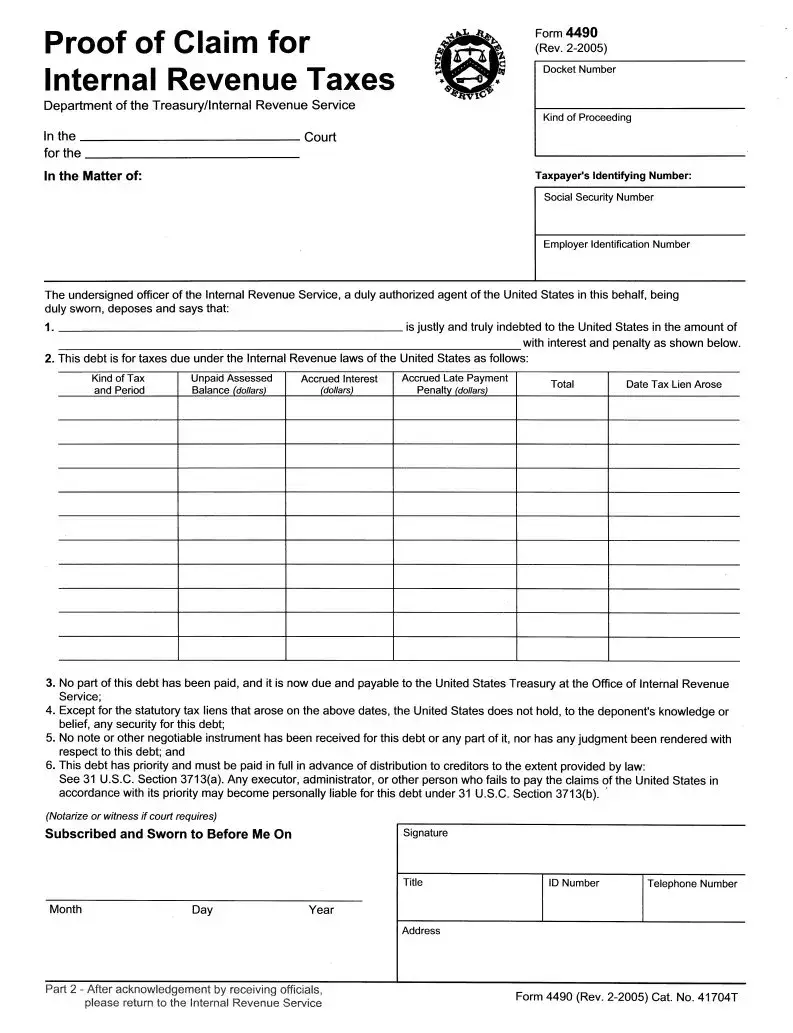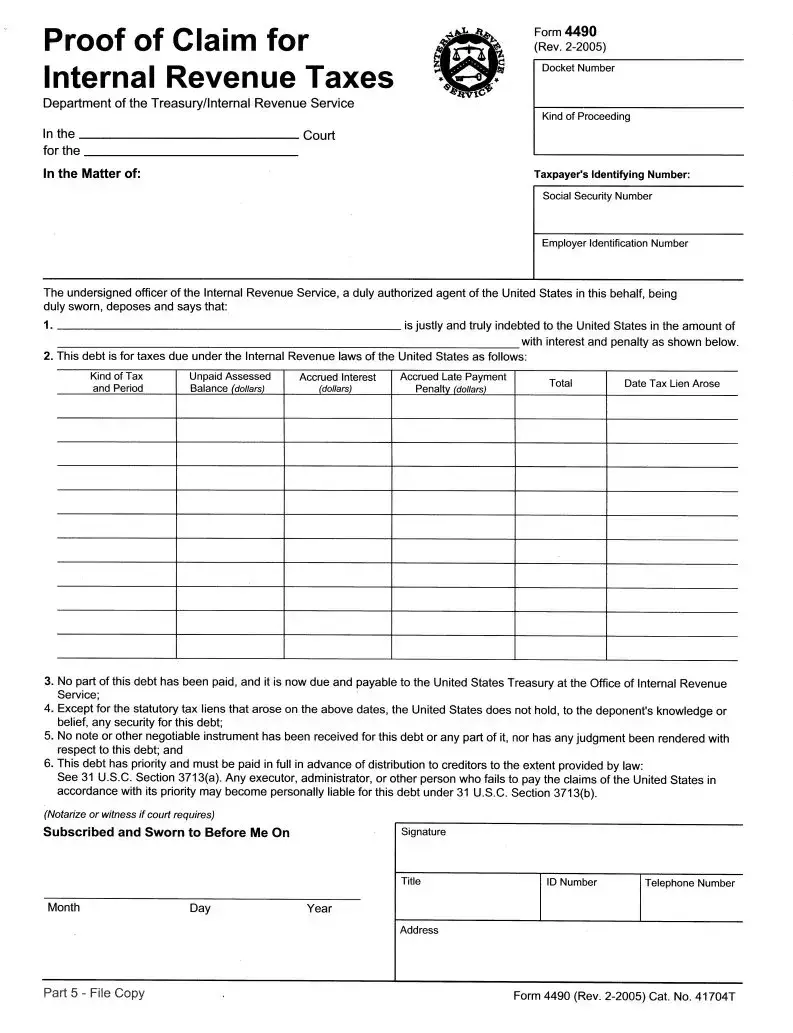Filling out the 4490 form, known as the Proof of Claim for Internal Revenue Taxes, can be a complex process for many individuals. Mistakes are frequent, particularly for those unfamiliar with tax-related paperwork. One common error involves incomplete information. Individuals may neglect to fill in critical sections, such as the amount owed or the specifics of the tax liability. Each blank represents an essential piece of information that the court or the IRS requires to process the claim appropriately.
Another mistake often occurs when providing identifying numbers. People sometimes confuse Social Security Numbers with Employer Identification Numbers, leading to incorrect or delayed processing. Accuracy in these numbers is crucial, as any discrepancies can hinder the credibility of the claim.
Many individuals also fail to provide adequate supporting documentation. It is not enough to simply claim a debt exists; proofs of tax assessments and other relevant details must accompany the form. Without this documentation, the claim may be dismissed or delayed significantly.
Another frequent oversight relates to the signature requirement. Submitting the form without a proper signature can invalidate the entire claim. Individuals must ensure that all signatures are in place and align with the official titles of the signatories.
Moreover, missing deadlines is a significant concern. Each legal proceeding has specific timelines, and failing to submit the form within these periods can result in losing one’s right to make a claim. Keeping track of all relevant dates is vital for maintaining one's standing in the matter.
A lack of clarity in detailing the debts also poses a substantial risk. When individuals do not clearly outline each debt, along with its accumulation of interest and penalties, it can lead to misunderstandings or misinterpretations by the court or the IRS. A detailed and transparent representation of financial obligations is essential to avoid complications.
Some individuals neglect to notarize the form when necessary. If the court or local procedures require notarization, failing to do so can invalidate the claim, leading to significant setbacks in resolving tax issues.
It is also important to be aware of the consequences of ignoring notifications. If the IRS or the court sends notifications regarding the claim, individuals must respond promptly. Ignoring such communications can result in adverse decisions that are difficult to reverse.
Lastly, individuals tend to overlook the importance of maintaining copies of the completed form and any accompanying documents. Keeping a record of what has been submitted plays a crucial role in tracking claims and addressing future inquiries or disputes. Being meticulous in maintaining documentation can save considerable stress down the line.
